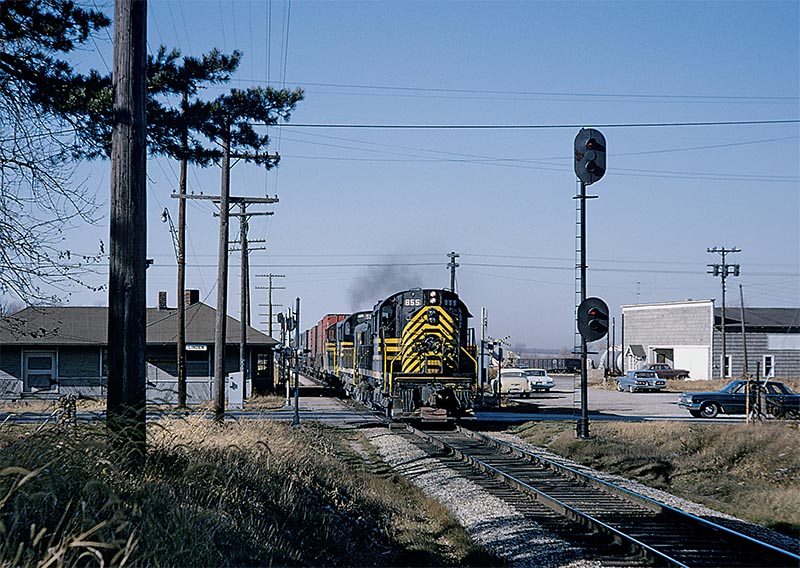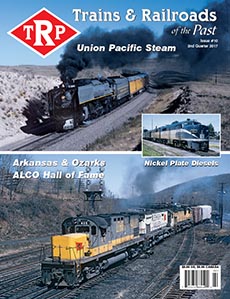Due to the fact that the New York, Chicago & St. Louis (otherwise known as the “Nickel Plate Road”) was merged into the Norfolk & Western on October 16, 1964, it’s easy to forget that they had what we would consider a fairly unusual roster of diesel locomotives. They didn’t have any General Electric U-boats or EMD F-units. Their only GE unit was a single 44-tonner and their only Alco Century-series locomotive was C420 no. 578, which they received soon before the merger. Nickel Plate’s numbering system started with Alco S2 No. 1 and topped out with their solitary GP35 No. 910, never assigning a four-digit number to any diesel. Nickel Plate’s paint scheme was rather simple, but attractive, and did not go through any major changes, except for the width of the yellow striping. The freight units wore black and yellow, but NKP’s eleven Alco PA1’s wore bright, beautiful “Bluebird” colors, a stark contrast from their freight-hauling counterparts. Nickel Plate also acquired a pair of high-hood RS36’s from Alco equipped with steam generators for passenger service in 1962, but unfortunately they did not receive the blue and white passenger scheme, nor did their fleet of passenger-equipped GP9’s.
Although the railroad displayed its nickname boldly across the long hood, the official “N.Y.C.& ST.L.” designation could still be seen on their diesel fleet if you looked closely, as it was written in much smaller letters. Those initials could be found both with and without the periods. This article is not meant to be an all-inclusive study of Nickel Plate’s diesel history, but rather to give you a taste of the railroad’s post-steam existence, which lasted for only a very brief period of time before the merger. Despite their “basic black” carbodies, NKP operated a rather interesting diesel fleet with lots of character.
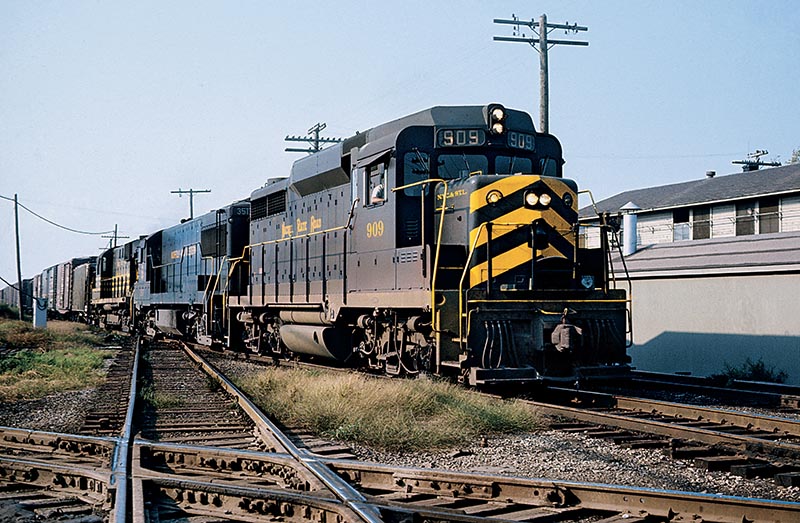
Even after the merger with the Norfolk & Western, the Nickel Plate was still an exciting railroad to watch. Check out the action at State Line Tower in December 1965 as an eastbound train powered by an NKP GP30 and RS36, spliced by a highhood N&W U25B, roars through the junction. The tower is located at Hammond, Ind., and is a complex meeting of several railroads, including NKP, Chesapeake & Ohio, Erie, Monon, Indiana Harbor Belt, Chicago & Western Indiana and the Baltimore & Ohio Chicago Terminal. Kodachrome by Jim Boyd, collection of Kevin EuDaly
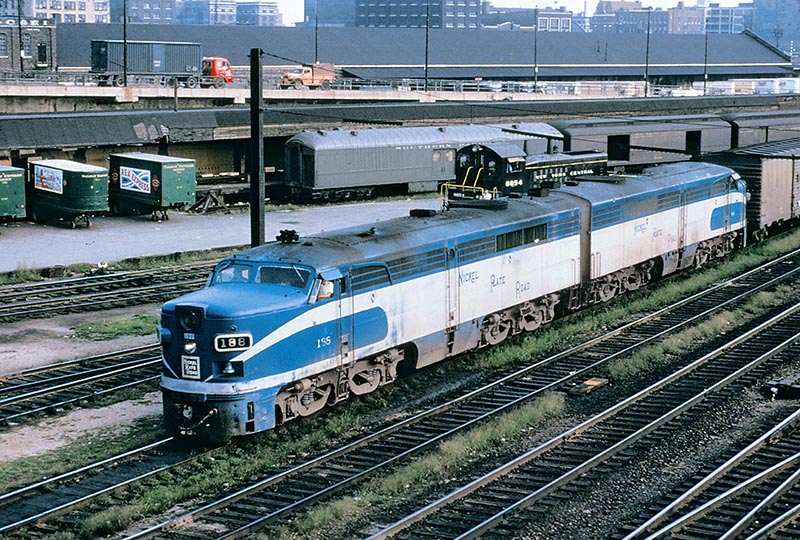
Nickel Plate’s PA1 #188 and a matching partner glide past a New York Central SW7 in the maze of trackage in downtown Chicago. It’s easy to spot the Railway Express Agency trailers, but did you notice the Southern Pacific pool car near the bumper post and the Union Pacific express car hiding just beyond? It appears that the blue paint did not adhere to the bell for very long — I could imagine that over time, paint chips would fall off continuously from the vibrations that occurred when it rang. In other words, the paint peeled when the bell pealed. Color transparency from the William F. Strassner collection
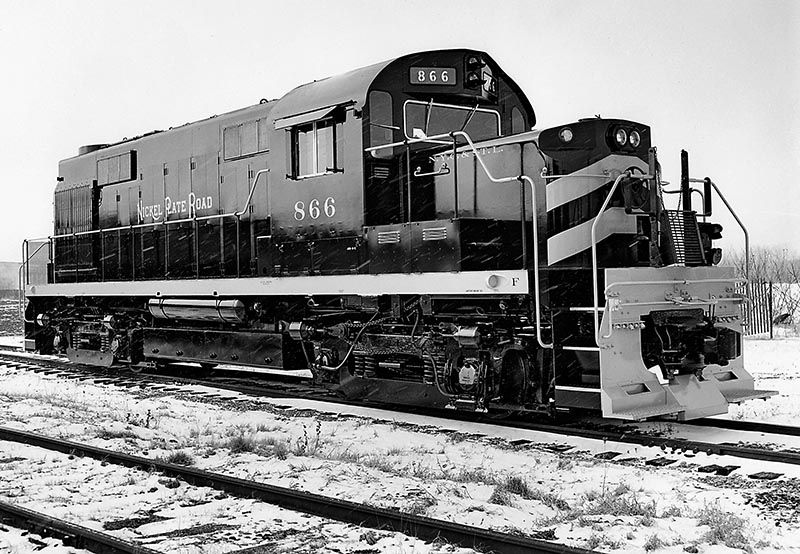
According to the book Alco Reference #1, Nickel Plate No. 866 was delivered in February 1962, which would explain the snow swirling about the skies of Schenectady in this ALCO builders photo. The 866 had a shop number of S-3333-18, with construction number 83698. The RS36’s in this order were the first ones built by ALCO, as they succeeded the RS11; however, both models were designated “DL701.” Notice that the later NKP diesels had their yellow zebra stripes replaced with very wide bands that did not continue down the side of the low nose. The solid fold-up walkway plate seen on earlier locomotives has been replaced with an open grate, but the strangest accessories that have come to my attention are the poling pockets incorporated into the frame — I can’t believe that they received much, if any, use. Image courtesy of Bob’s Photos


